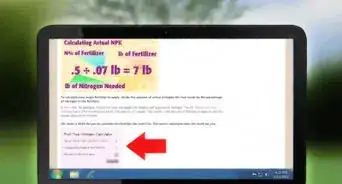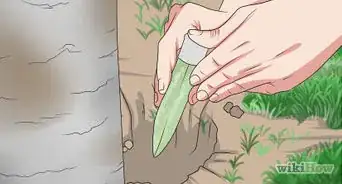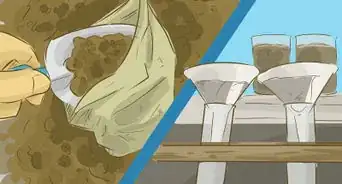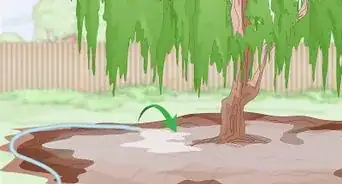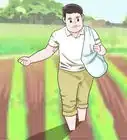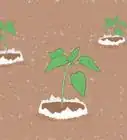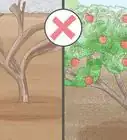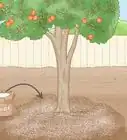This article was co-authored by Ben Barkan. Ben Barkan is a Garden and Landscape Designer and the Owner and Founder of HomeHarvest LLC, an edible landscapes and construction business based in Boston, Massachusetts. Ben has over 12 years of experience working with organic gardening and specializes in designing and building beautiful landscapes with custom construction and creative plant integration. He is a Certified Permaculture Designer, is licensed Construction Supervisor in Massachusetts, and is a Licensed Home Improvement Contractor. He holds an associates degree in Sustainable Agriculture from the University of Massachusetts Amherst.
This article has been viewed 89,127 times.
Learning how to choose fertilizer for your garden plants can be a daunting process. Fertilizers differ in important ways, including what they are composed of, their mineral content, and whether they are organically produced or not. Some fertilizers boost leaf growth, while others boost flower and fruit growth. If you want to know what fertilizer to use on your garden plants and when to use it, you'll need to assess your plants' needs and then understand which qualities to look for in a fertilizer.
Steps
Choosing the Right Fertilizer for Plants
-
1Decide between organic and conventional fertilizer.[1] A broad and important choice you'll be confronted with is whether to use organic or inorganic fertilizer. Fertilizer not marked as "organic" is typically petroleum-based, and should not be used in organic gardens. Organic fertilizer can come from many sources, including animals (e.g. manure), plants (e.g. seaweed), minerals (e.g. Epsom salt), and food (e.g. molasses and milk).
- If you're buying non-organic fertilizer, you'll need to choose a release speed. General-purpose fertilizer releases most of its nutrients within a few months, and so will have to be applied several times per season. Slow-release fertilizers remain effective for an entire growing season. Water-soluble fertilizers become available to the plants as soon as you water the area.
- The distinction regarding release speed does not need to be made with organic fertilizers. Plants will use the nutrients in organic fertilizer at the rate needed, so there is no risk of over-fertilizing and burning the plants.
-
2Purchase a soil test.[2] After the winter season has passed and the spring has begun, conduct a soil test to assess the pH and acidity level of your soil. Poor soil means that the soil is deprived of nutrients so fertilizing your soil can be a great solution to that.[3]Advertisement
-
3Determine whether your plants need nitrogen, phosphorus, or potassium.[6] The 3 main nutrients provided by plant fertilizers are nitrogen, phosphorus, and potassium. In fact, the concentrations of these 3 nutrients are printed on the front of each package as a series of 3 numbers, sometimes called the "NPK" numbers or the fertilizer grade.
- Deficiencies of these 3 minerals can be roughly diagnosed through leaf appearance. Nitrogen deficiencies lead to yellow and brown leaves; phosphorus deficiencies cause purple-veined and slow-growing leaves; potassium deficiencies lead to curled, distorted leaves. Nitrogen is the nutrient that is most often deficient in plants.[7]
- The balance between nitrogen and potassium determines where plants focus their growth. A high nitrogen-to-potassium ratio boosts leaf growth, which is ideal for lawns, shrubs, and other plants in which foliage is desirable. A high potassium-to-nitrogen ratio will boost fruit, flower, and vegetable growth at the expense of leaf growth.
- To achieve the most accurate picture of your soil's nutrient content, you can have a soil sample from your garden analyzed. In the U.S., many county extension offices can perform this test or direct you towards an organization that can.
-
4Choose the appropriate fertilizer for your plants' nutrient needs.[8] Packaged fertilizers always display their NPK content on the package. Fertilizers may also include other nutrients that plants need, including sulfur, magnesium, and calcium.[9] Some types of fertilizers are richer in 1 nutrient than another, and you should match this nutrient content to your plants' needs.
- Plant-derived fertilizers provide quick nutrients to your soil and can be applied often. Corn gluten meal is a good source of nitrogen; soybean meal is a good source of phosphorus; alfalfa meal is a good source of potassium.
- Animal-derived fertilizers tend to offer large amounts of nitrogen, and are therefore good for encouraging leafy growth. Bone meal is also a good source of phosphorus, and fish emulsion is a great all-purpose fertilizer. Manure, while often low in nutrient content, provides a large amount of organic matter that increases the soil's water retention and introduces beneficial microorganisms.
- Mineral-based fertilizers release their nutrients into the soil very slowly, and so are best considered long-term amendments rather than short bursts of food. Epsom salt contains plenty of magnesium and sulfur, which are beneficial for tomatoes and peppers. Gypsum contains high levels of calcium and sulfur.
-
5Apply fertilizer routinely to plants every 60 days or so. Avoid burning plants with fertilizers by watering them before feedings. If plants have not been planted yet, add the fertilizer into the soil by tilling it. If plants are already planted or are in the process of being planted, sprinkle the fertilizer in the garden bed as per the fertilizer’s instructions.[10]
- Typically, it's better to apply a little fertilizer at a time, rather than a lot at once.[11]
Choosing the Right Fertilizer for Your Lawn
-
1Pay close attention to the numbers on the bag of fertilizer. There are three numbers on the label, showing the percentage of nitrogen, phosphate, and potassium – the main nutrients your lawn needs in order to thrive and flourish. A bag that reads 20-5-10 (20% nitrogen, 5% phosphate, 10% potassium) is the perfect starter mix to apply to your lawn during the spring.[12]
-
2Choose a fertilizer with a slow burning release. Slow release fertilizers release nutrients gradually over time. Fertilize the lawn every 6 to 8 weeks. Give the lawn 2-3 pounds of fertilizer over the duration of the lawn’s growing season.[13]
-
3Go for a granular fertilizer for even coverage that gets the job done.[14] Apply the granular fertilizer onto your lawn with a spreader to get the consistent coverage without the equipment pros are often equipped with.
- Keep in mind that if you choose to use a granular fertilizer, before you apply it, the ground needs a quarter inch of water to wet it before the fertilizer gets laid down.[15]
-
4Give the lawn its first feeding of fertilizer when the soil has warmed up. The perfect time of year to begin fertilizer application is the middle of April. The amount of feedings should total up to 5 by the end of the grass’s growing season.[16]
- The second fertilizer feeding should occur 4 weeks later, around mid-May. Subsequent feedings should occur every 6-8 weeks after that until November hits.
- On the third feeding, don’t use the 20-5-10 slow burning granular fertilizer you chose, instead give the ground an organic feeding of manure.[17]
- Watering your lawn will dictate how much time occurs in between feedings for the 3rd through 5th applications. If your lawn receives routine watering through a sprinkler system, you will need to fertilize the lawn every 6 weeks. If you don’t have a sprinkler, the wait in between feedings can be 8 weeks.
-
5Park your spreader in your driveway or on top of a tarp and fill it. Any loose granules left on one spot on the ground can burn and/or kill the grass. Disperse the fertilizer onto your lawn by mowing the lawn with the spreader.[18]
- Start by applying half of what the bag recommends for the first fertilizer feeding. This helps prevent over application which can do more harm than good to your lawn.
- Begin by covering the yard’s perimeter and then work your way to filling in the middle.[19]
Expert Q&A
-
QuestionHow do you know when a plant needs fertilizer?
 Ben BarkanBen Barkan is a Garden and Landscape Designer and the Owner and Founder of HomeHarvest LLC, an edible landscapes and construction business based in Boston, Massachusetts. Ben has over 12 years of experience working with organic gardening and specializes in designing and building beautiful landscapes with custom construction and creative plant integration. He is a Certified Permaculture Designer, is licensed Construction Supervisor in Massachusetts, and is a Licensed Home Improvement Contractor. He holds an associates degree in Sustainable Agriculture from the University of Massachusetts Amherst.
Ben BarkanBen Barkan is a Garden and Landscape Designer and the Owner and Founder of HomeHarvest LLC, an edible landscapes and construction business based in Boston, Massachusetts. Ben has over 12 years of experience working with organic gardening and specializes in designing and building beautiful landscapes with custom construction and creative plant integration. He is a Certified Permaculture Designer, is licensed Construction Supervisor in Massachusetts, and is a Licensed Home Improvement Contractor. He holds an associates degree in Sustainable Agriculture from the University of Massachusetts Amherst.
Garden & Landscape Designer Check if it has any nitrogen, potassium, or phosphorus deficiencies. Deficiencies of these 3 minerals can be roughly diagnosed through leaf appearance. Nitrogen deficiencies lead to yellow and brown leaves; phosphorus deficiencies cause purple-veined and slow-growing leaves; potassium deficiencies lead to curled, distorted leaves. Nitrogen is the nutrient that is most often deficient in plants.
Check if it has any nitrogen, potassium, or phosphorus deficiencies. Deficiencies of these 3 minerals can be roughly diagnosed through leaf appearance. Nitrogen deficiencies lead to yellow and brown leaves; phosphorus deficiencies cause purple-veined and slow-growing leaves; potassium deficiencies lead to curled, distorted leaves. Nitrogen is the nutrient that is most often deficient in plants. -
QuestionHow do I know which fertilizer to use?
 Ben BarkanBen Barkan is a Garden and Landscape Designer and the Owner and Founder of HomeHarvest LLC, an edible landscapes and construction business based in Boston, Massachusetts. Ben has over 12 years of experience working with organic gardening and specializes in designing and building beautiful landscapes with custom construction and creative plant integration. He is a Certified Permaculture Designer, is licensed Construction Supervisor in Massachusetts, and is a Licensed Home Improvement Contractor. He holds an associates degree in Sustainable Agriculture from the University of Massachusetts Amherst.
Ben BarkanBen Barkan is a Garden and Landscape Designer and the Owner and Founder of HomeHarvest LLC, an edible landscapes and construction business based in Boston, Massachusetts. Ben has over 12 years of experience working with organic gardening and specializes in designing and building beautiful landscapes with custom construction and creative plant integration. He is a Certified Permaculture Designer, is licensed Construction Supervisor in Massachusetts, and is a Licensed Home Improvement Contractor. He holds an associates degree in Sustainable Agriculture from the University of Massachusetts Amherst.
Garden & Landscape Designer That all depends on the plants you're growing. In general, nitrogen tends to be the nutrient needed in the largest quantity, so look for a fertilizer that has a high percentage of nitrogen. If your plants aren't doing well with that, test the soil's pH, then look for a fertilizer that will help balance it out. Organic compost tends to be healthier for plants, but you can still overfertilize with it, so just be careful.
That all depends on the plants you're growing. In general, nitrogen tends to be the nutrient needed in the largest quantity, so look for a fertilizer that has a high percentage of nitrogen. If your plants aren't doing well with that, test the soil's pH, then look for a fertilizer that will help balance it out. Organic compost tends to be healthier for plants, but you can still overfertilize with it, so just be careful. -
QuestionWhat fertiziler should I use for tomatoes?
 Katie GohmannKatherine Gohmann is a Professional Gardener in Texas. She has been a home gardener and professional gardener since 2008.
Katie GohmannKatherine Gohmann is a Professional Gardener in Texas. She has been a home gardener and professional gardener since 2008.
Professional Gardener You can find fertilizers specifically for tomatoes and other vegetables at your local home and garden center. It's up to you whether you want to try liquid, granular, or spike fertilizer. Just make sure to read the directions! You can also try Epsom salt. It's not really a salt but a magnesium-sulfate blend.
You can find fertilizers specifically for tomatoes and other vegetables at your local home and garden center. It's up to you whether you want to try liquid, granular, or spike fertilizer. Just make sure to read the directions! You can also try Epsom salt. It's not really a salt but a magnesium-sulfate blend.
Things You'll Need
- Fertilizer
- Broadcast spreader
- Cultivator
References
- ↑ http://www.todayshomeowner.com/debate-over-organic-chemical-fertilizers/
- ↑ Ben Barkan. Garden & Landscape Designer. Expert Interview. 2 June 2020.
- ↑ https://pro.com/blog/3-31-15-how-to-choose-fertilizer-for-garden/
- ↑ http://gardenclub.homedepot.com/fertilize-vegetables-herbs/
- ↑ http://gardenclub.homedepot.com/fertilize-vegetables-herbs/
- ↑ Ben Barkan. Garden & Landscape Designer. Expert Interview. 2 June 2020.
- ↑ Ben Barkan. Garden & Landscape Designer. Expert Interview. 14 April 2020.
- ↑ Ben Barkan. Garden & Landscape Designer. Expert Interview. 2 June 2020.
- ↑ Ben Barkan. Garden & Landscape Designer. Expert Interview. 14 April 2020.
- ↑ http://gardenclub.homedepot.com/fertilize-vegetables-herbs/
- ↑ Ben Barkan. Garden & Landscape Designer. Expert Interview. 14 April 2020.
- ↑ http://www.popularmechanics.com/home/lawn-garden/how-to/g237/the-quick-and-easy-guide-to-fertilizing-your-lawn/
- ↑ http://www.popularmechanics.com/home/lawn-garden/how-to/g237/the-quick-and-easy-guide-to-fertilizing-your-lawn/
- ↑ http://www.popularmechanics.com/home/lawn-garden/how-to/g237/the-quick-and-easy-guide-to-fertilizing-your-lawn/
- ↑ http://www.popularmechanics.com/home/lawn-garden/how-to/g237/the-quick-and-easy-guide-to-fertilizing-your-lawn/
- ↑ http://www.popularmechanics.com/home/lawn-garden/how-to/g237/the-quick-and-easy-guide-to-fertilizing-your-lawn/
- ↑ http://www.popularmechanics.com/home/lawn-garden/how-to/g237/the-quick-and-easy-guide-to-fertilizing-your-lawn/
- ↑ http://www.popularmechanics.com/home/lawn-garden/how-to/g237/the-quick-and-easy-guide-to-fertilizing-your-lawn/
- ↑ http://www.popularmechanics.com/home/lawn-garden/how-to/g237/the-quick-and-easy-guide-to-fertilizing-your-lawn/
- ↑ Ben Barkan. Garden & Landscape Designer. Expert Interview. 2 June 2020.
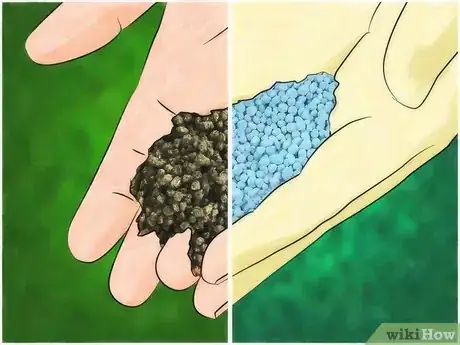
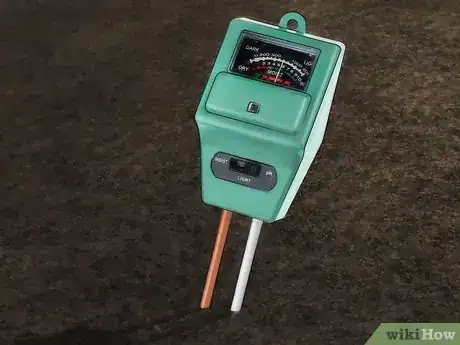

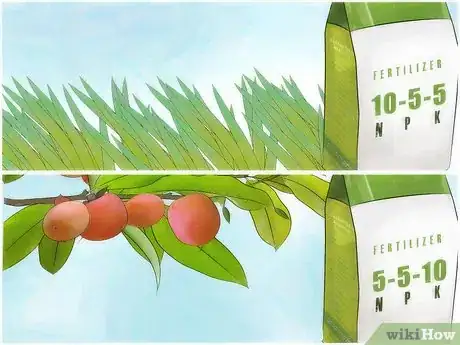

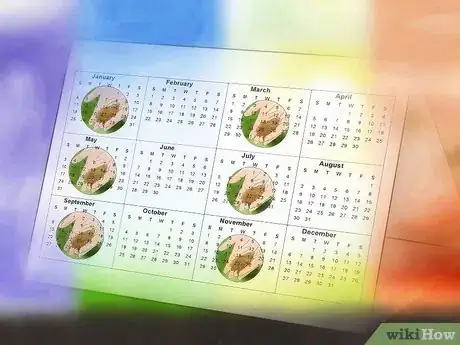
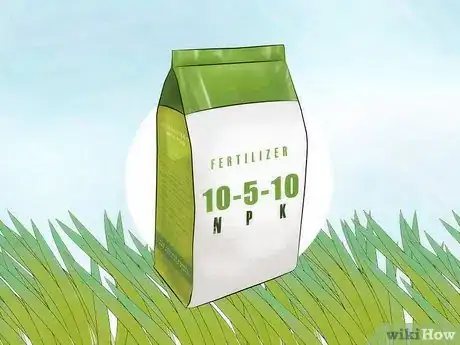
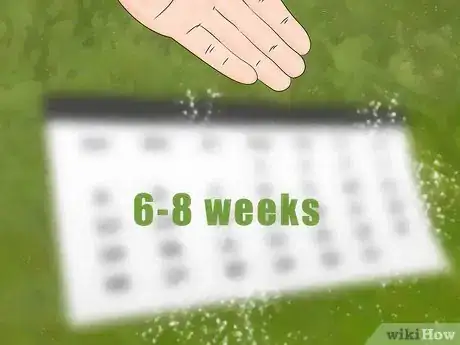
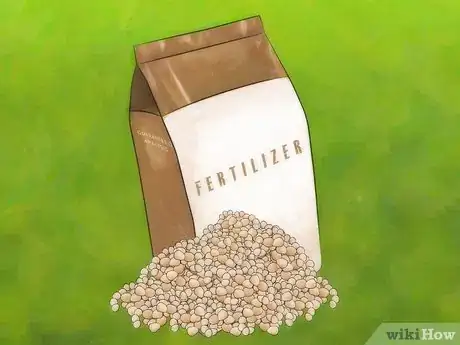
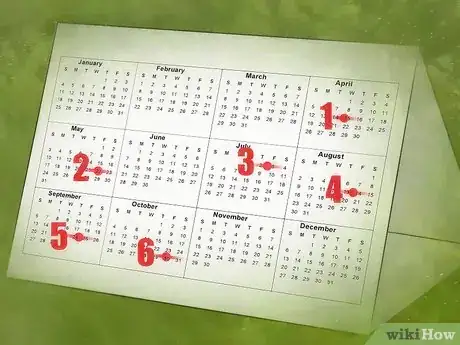
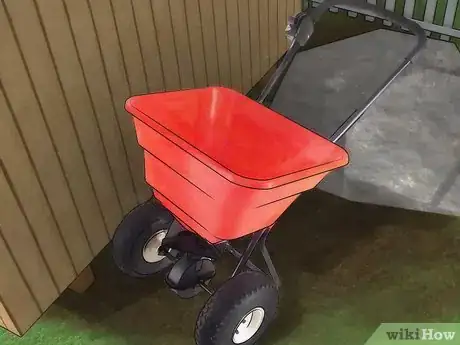
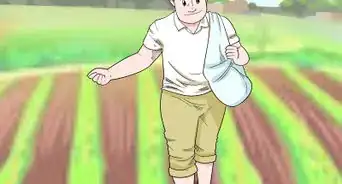
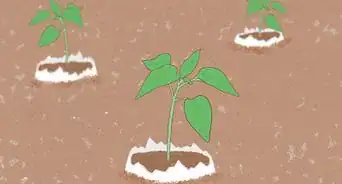
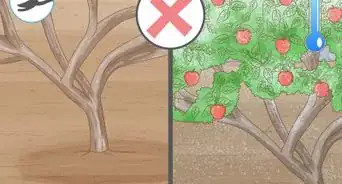
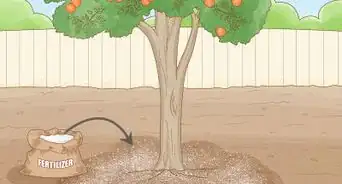
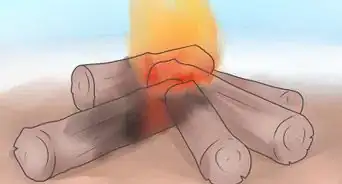
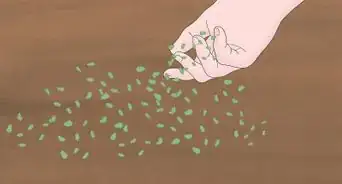
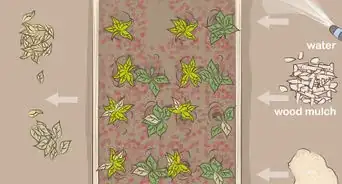
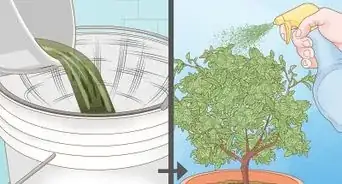
-Step-10-Version-3.webp)
